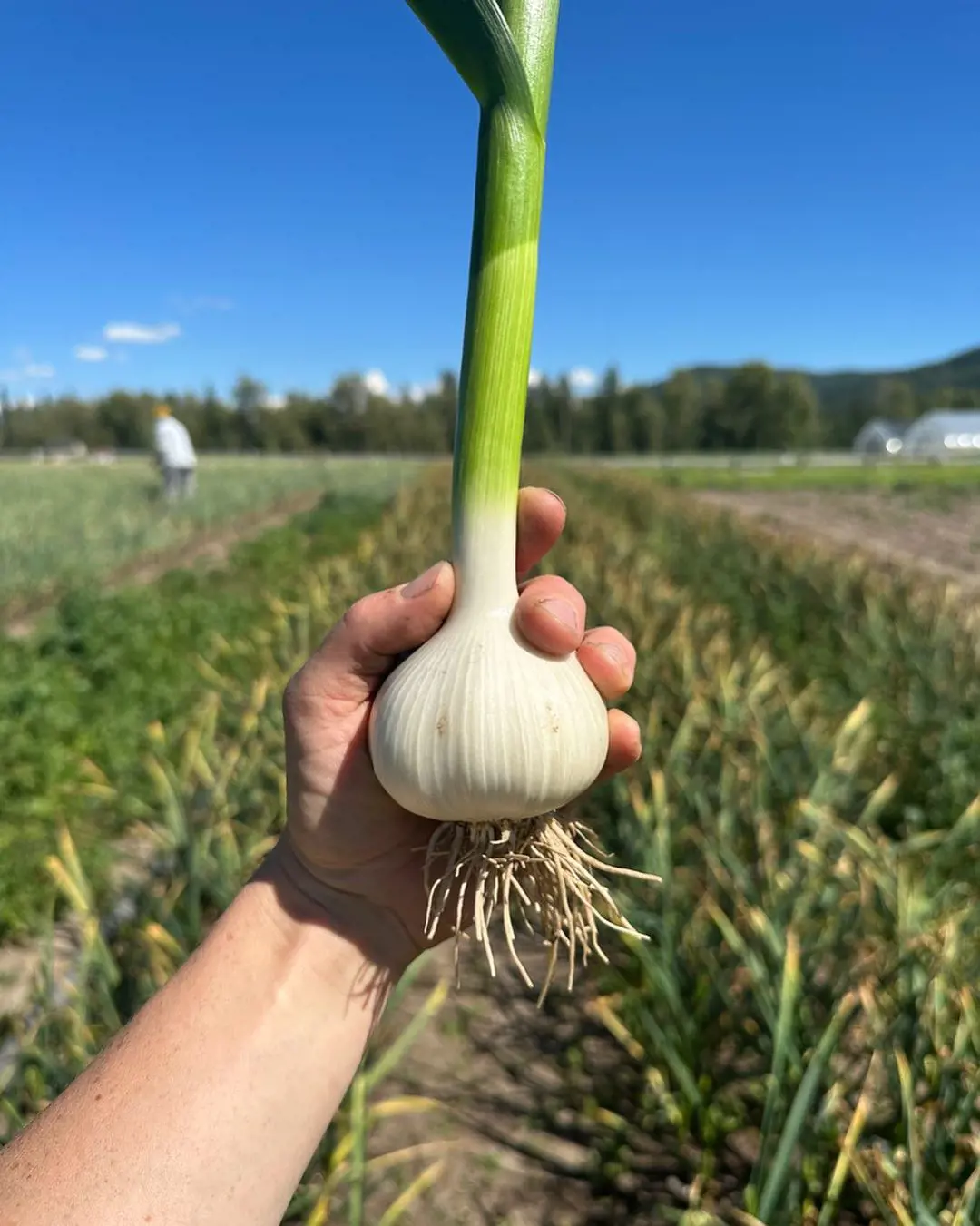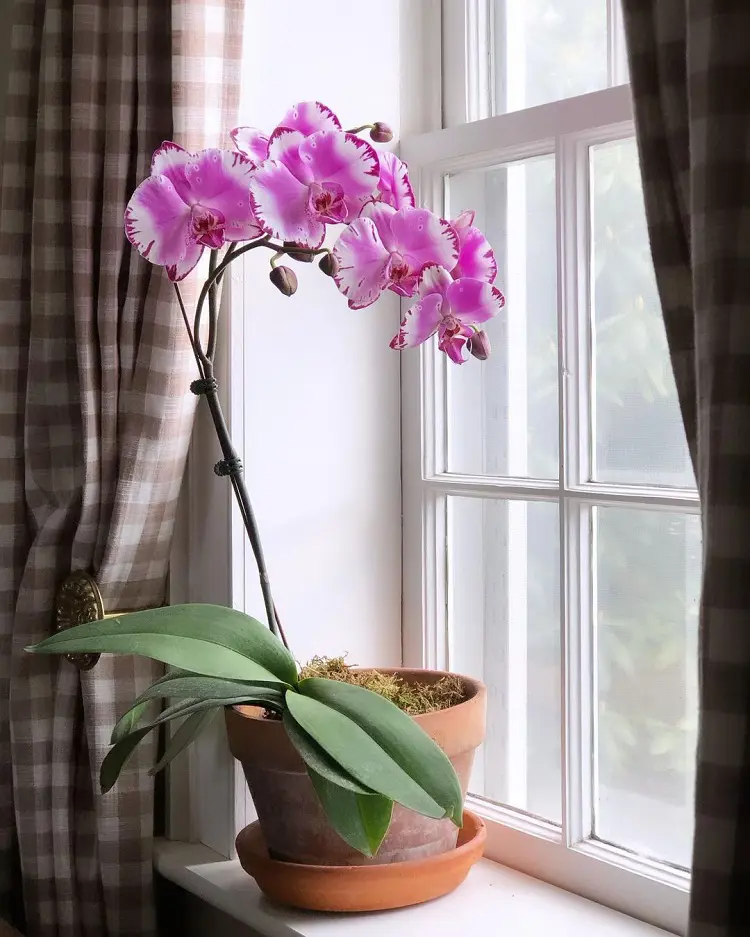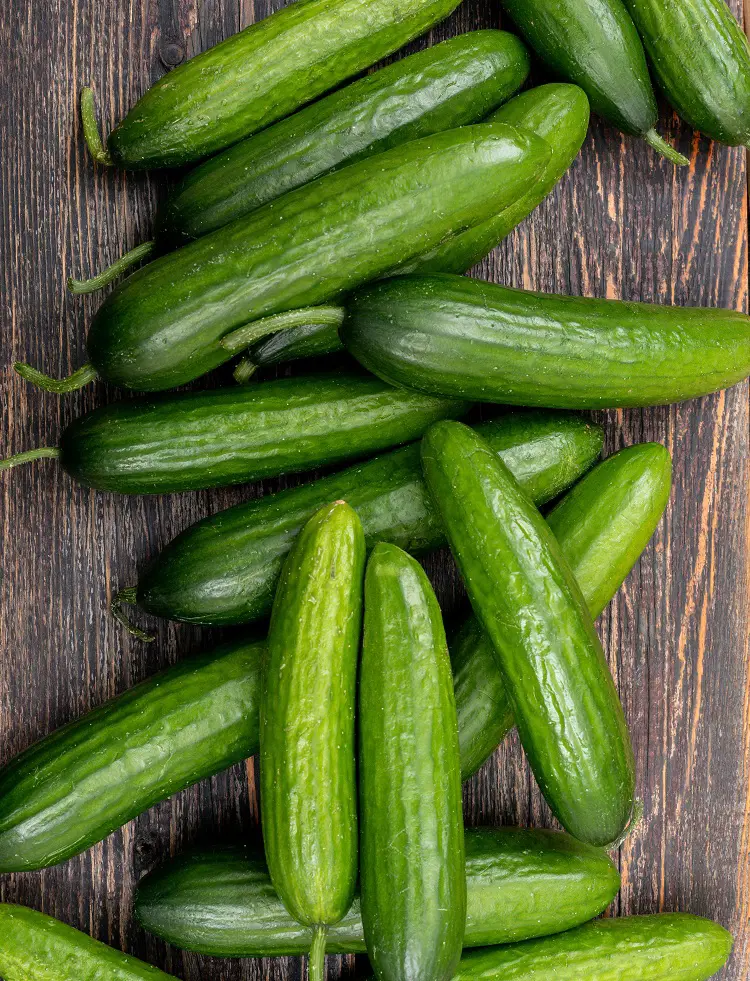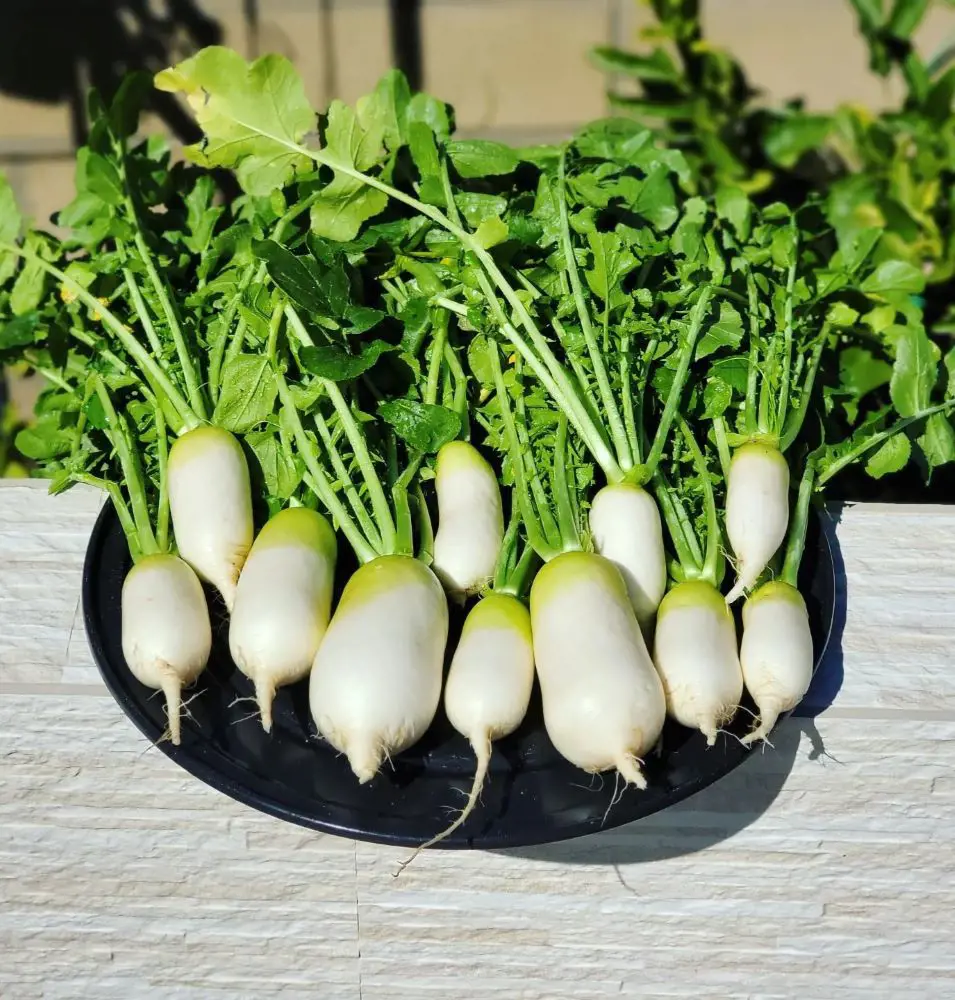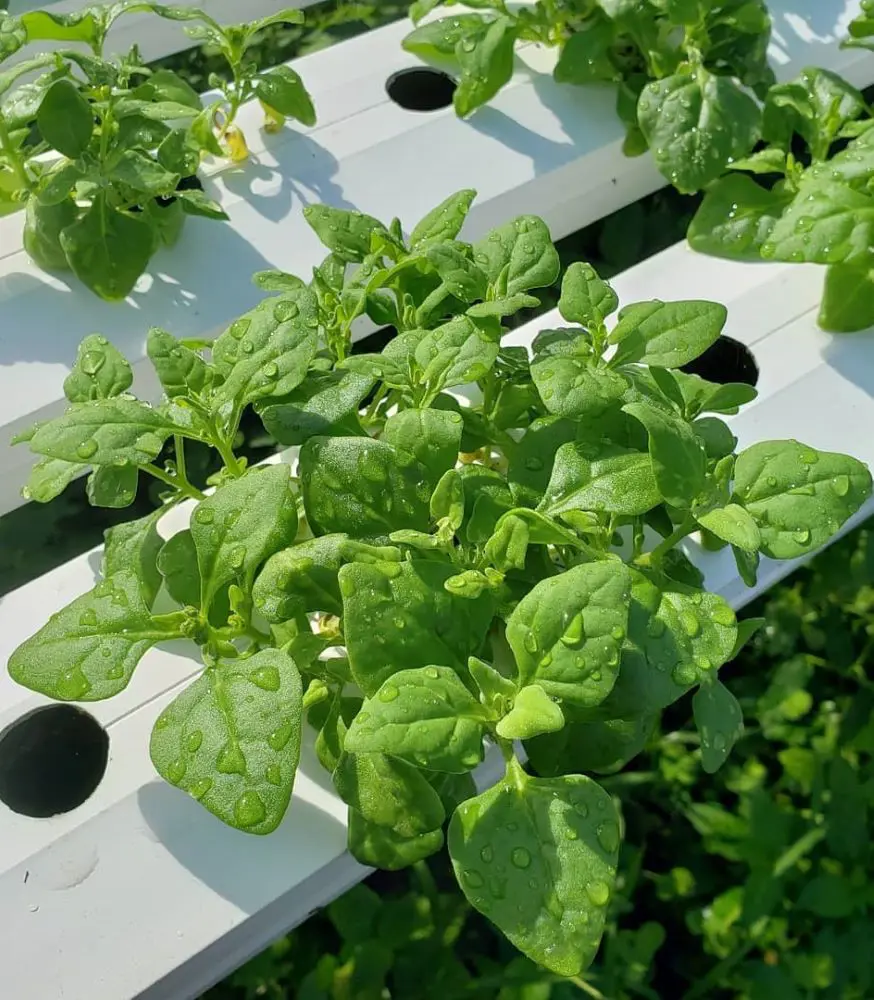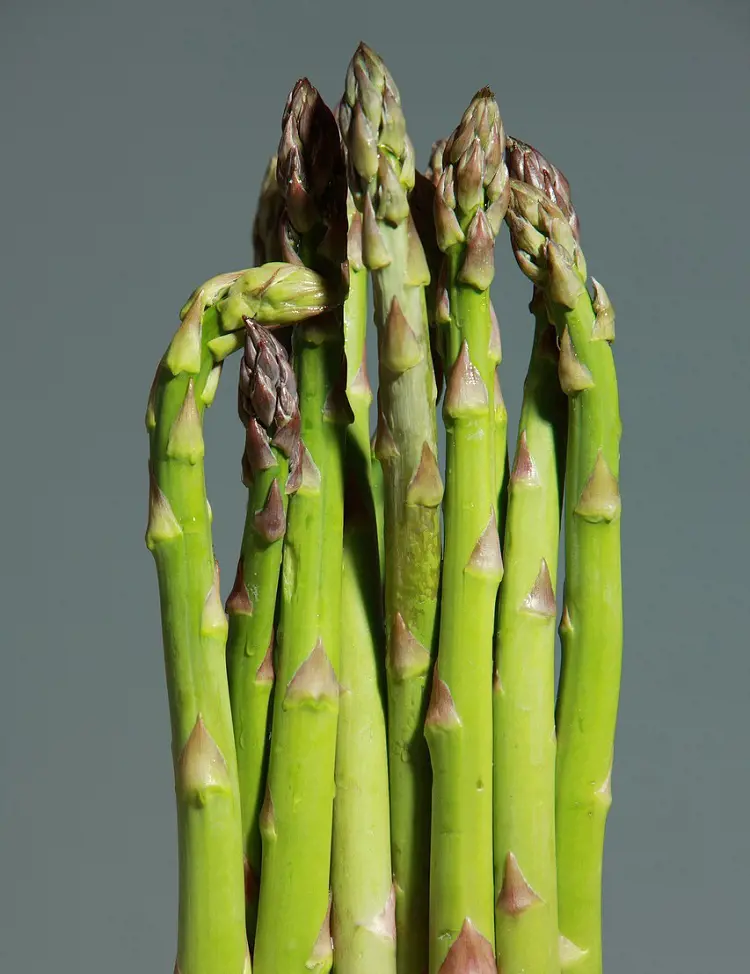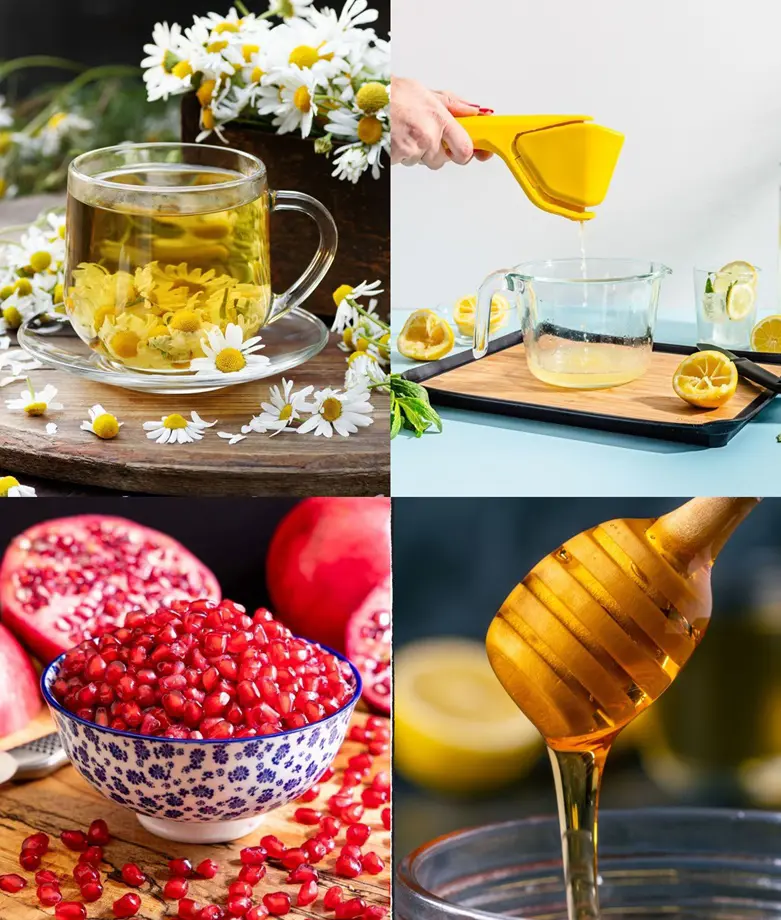How To Plant, Grow And Harvest Corn All By Yourself
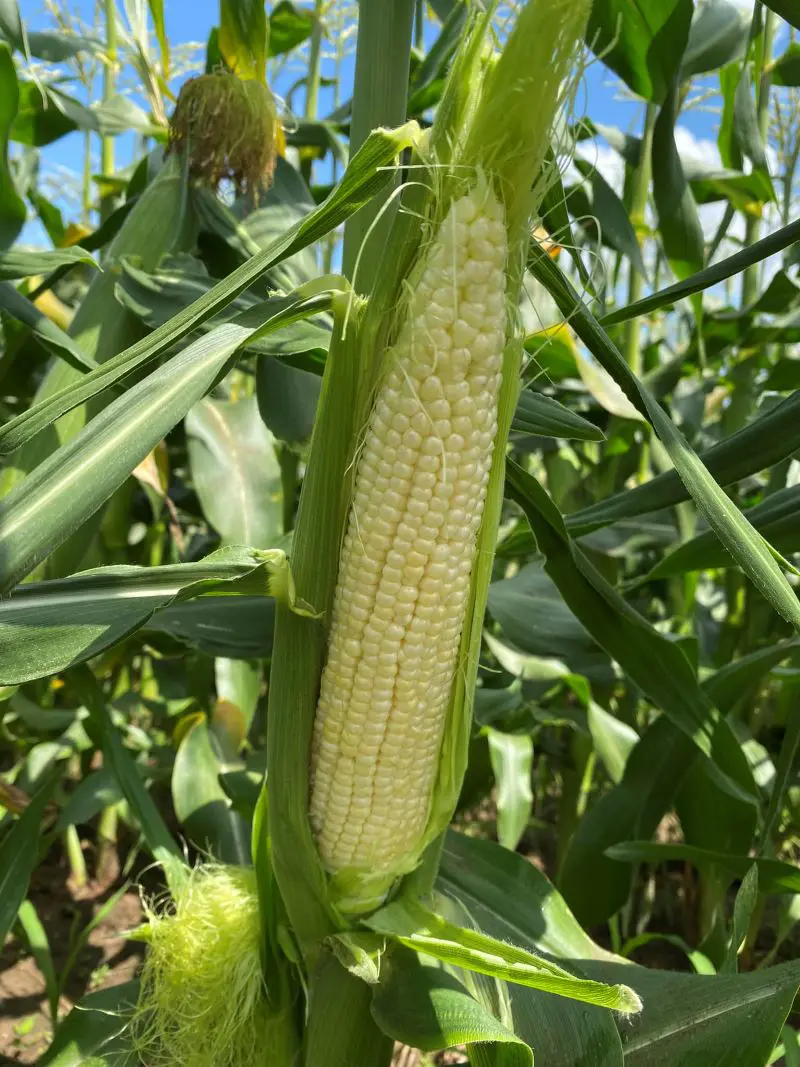
This post may contain affiliate links. If you make a purchase through links on our site, we may earn a commission.
Growing your popcorn or sweet corn at home garden can seem like an interesting idea. However, it requires a large amount of space to grow as it is a tall plant that needs plenty of room to spread out.
But, if you want to enjoy freshly popped popcorn from your yard, it's relatively easy. With a few simple steps and proper care, you can harvest your homegrown popcorn for a delightful treat.
Corn Overview
| Scientific Name | Zea mays |
| Common Name | Maize, Corn |
| Plant Type | Annual |
| Size | 6 to 12 feet tall |
| Soil Type | Well-drained, fertile soil |
| Soil pH | Neutral to slightly acidic |
| Sun Exposure | Full sun |
| Harvest Time | Late summer to early fall |
| Culinary Use | Consumed fresh, cooked, or processed into various food products such as flour, cornmeal, corn |
| Zones | 4-10. (USDA) |
How To Grow Corn
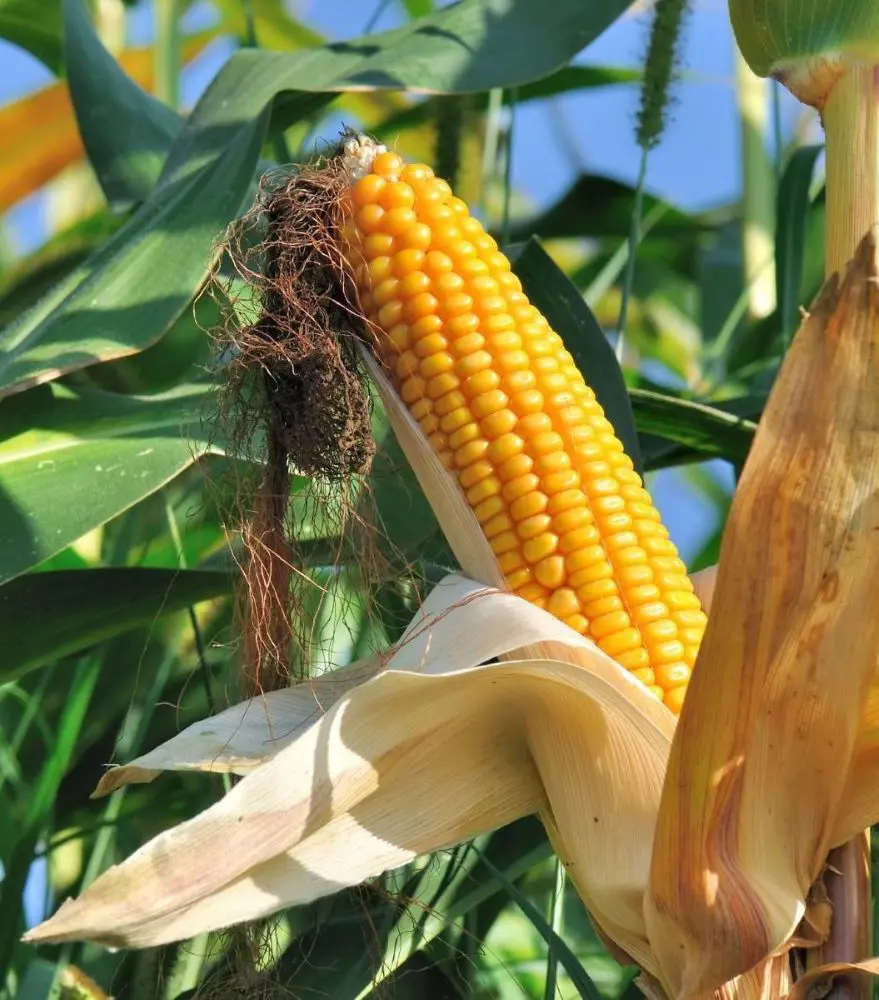
Growing corn in your yard can be an exciting experience, but it does require some planning and effort. Firstly, ensure you have a sunny location with well-drained soil as corn requires full sunlight to thrive. Then, prepare the soil by adding compost and fertilizer. This will provide essential nutrients for growth.
Always plant corn seeds in blocks rather than rows as this method is best for pollination. Regular watering is crucial, especially during dry periods. Keep an eye out for pests and diseases, and consider spacing requirements to allow for proper growth.
When To Plant
Corn seeds germinate best when the soil temperature is consistently above 60°F (15°C). Planting too early, when there is still the risk of cold, increases the likelihood of damage to the seeds and young plants. Thus, the planting time could vary depending on your location and local climate conditions.
If you live in the warmest parts of the United States, you can plant in the springtime between March and May. But, in colder areas, like the northern states, planting happens a bit later, typically in late spring or early summer, around May or June.
During its early growth stages, corn is extremely sensitive to frost and cold climates. Exposure to frost can damage and kill young plants, leading to poor germination, stunted growth, or even complete crop loss. To avoid these issues, you should plant them when the soil temperature has sufficiently warmed up.
Where To Plant
When planting corn, it becomes important to select a suitable location that meets specific criteria. Firstly, it's important to select a plot with well-drained soil. Corn thrives best in loamy soil with excellent drainage. The soil should be rich in organic matter and nutrients, as corn is a heavy feeder and requires ample nourishment for robust stalks and ears.
Sun exposure is another critical factor in choosing a location for planting corn. Opt for a spot that receives full sunlight for most of the day, ideally a minimum of 8 hours of direct sunlight. Corn is a warm-season crop heavily reliant on sunlight for photosynthesis. Insufficient sunlight can significantly impact plant health and productivity.
Spacing, Depth, and Support
These plants are tall by nature and require large space to grow properly. Choose a spot that provides enough spacing between plants to accommodate their height. This ensures proper air circulation and prevents overcrowding. Aim for a planting density that allows each plant to develop fully without competing with neighboring plants for resources.
Generally, corn seeds should be planted about 1 to 1.5 inches deep in the soil. Planting at this depth ensures that the seeds have enough soil coverage to provide stability and moisture retention while still being close enough to the surface for germination. As for spacing, they should ideally be planted in rows with a distance of about 18 to 24 inches between each seed.
In addition, some types of tall corn might need help staying upright during strong winds. To prevent them from falling over, you can use stakes or support structures. These supports keep the corn plants steady and standing tall. Without them, the wind could knock them down, making it harder for them to grow properly.
Additional Growing Tips
When deciding how to grow corn, you have a couple of options. One approach is to sow seeds directly into the garden soil. This method works well if you have a large garden space and want to grow a significant amount of corn.
Another option is to create raised beds for your corn. Raised beds can be beneficial if you have poor soil quality or limited space in your garden.
Here's a step-by-step guide on how to plant corn:
1. Choose Your Corn Variety
There are various types of corn, each offering distinct flavors, maturity rates, and growing needs. When selecting a variety, consider factors such as climate, taste preference, and desired harvest time. Sweet corn remains a favored option for home gardens, while popcorn, flint corn, and flour corn present choices.
In warmer regions, varieties like "Golden Bantam" and "Peaches and Cream" thrive due to their heat tolerance and delicious kernels. Conversely, in areas with shorter growing periods, quick-maturing options such as "Early Sunglow" or "Golden Nugget" are preferable.
2. Prepare Soil
Maize loves well-drained, rich soil with a pH ranging from 6.0 to 7.0. If your soil lacks these conditions and other essential nutrients, you will need to make adjustments. Add organic matter like compost and well-rotted manure to enrich the soil and provide the necessary elements.
Once you have amended the soil, till it thoroughly to break up clumps and create a fine, crumbly texture. This ensures the soil is ready for planting and provides a good environment for maize roots to grow.
3. Sow Seeds
Before planting, prepare the soil by loosening it with a garden fork or tiller and removing any weeds or debris. Once the soil is prepared, sow the seeds about 1 to 1.5 inches deep in rows spaced around 12 to 24 inches apart. This spacing will ensure they have enough room to grow and develop properly.
Steps:
- Loosen the soil using a garden fork and remove any weeds and debris to create a suitable planting bed.
- Decide on row spacing, typically 12 to 24 inches apart, to provide adequate room for corn plants to grow.
- Sow corn seeds directly into the prepared soil, planting them about 1 to 1.5 inches deep. Place seeds evenly along the rows.
- Gently cover the planted seeds with soil and water the area thoroughly to ensure proper moisture for germination.
- Keep the soil consistently moist until seedlings emerge. Once established, thin the plants.
4. Water
Right after sowing, it's essential to maintain consistent soil moisture to support germination. Throughout the growth cycle, particularly during critical stages like tasseling and silking, increase soil moisture levels to facilitate optimal development. Corn generally requires around 1 to 1.5 inches of water each week, which can be provided either by rainfall or manual watering.
5. Feed Nutrition
To make sure your corn plants grow well, give them nitrogen fertilizer two times as they grow. First, when they're about knee-high, which is around 6-8 inches tall. Then, give them more when they start growing tassels. Also, it's important to follow soil test recommendations for other nutrients like phosphorus and potassium. This helps your plants stay healthy and produce a good crop.
6. Thinning
Thinning your maize plants involves removing some of the extra ones to give the remaining ones more space to grow. You should do this when your plants are a few inches tall and have their first real leaves, which usually happens about 2 to 3 weeks after they start growing.
Through this process, you help the remaining plants receive more sunlight, water, and nutrients as they won't have to compete with as many neighboring plants. This makes them stronger and healthier, with better roots and bigger ears of corn.
Corn Care
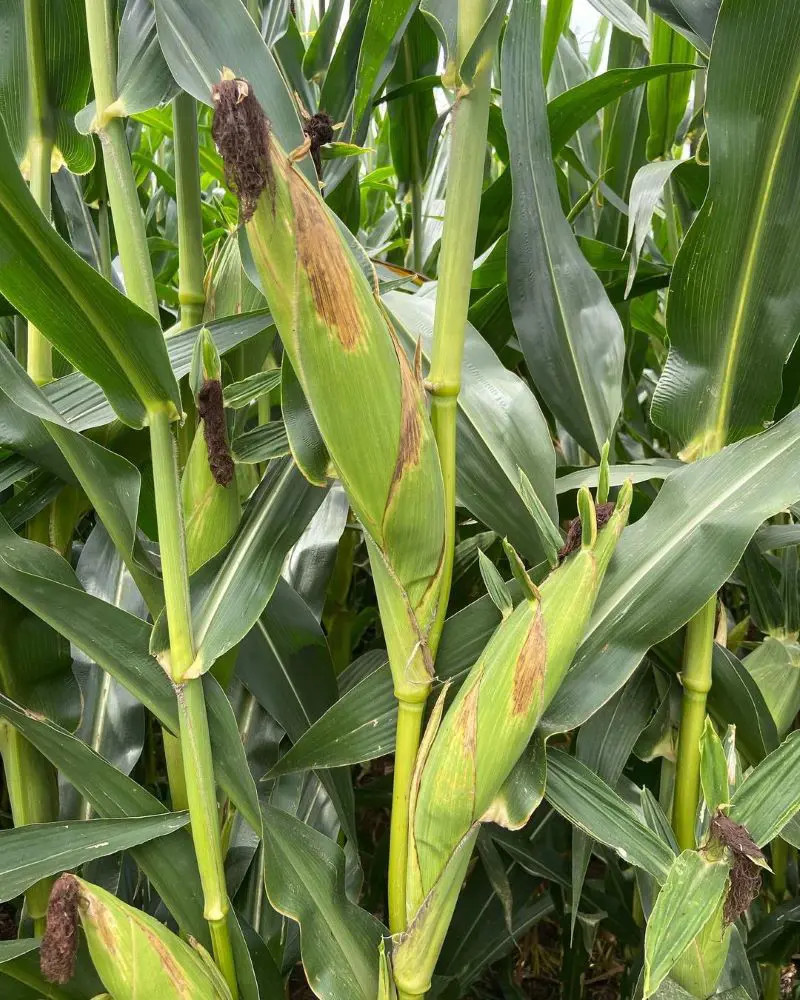
Immediately after planting, it's essential to monitor and maintain proper soil moisture levels. Corn seeds require consistent moisture to germinate and establish strong roots. Controlling weeds is equally vital during the early stages.
As the plants grow, regular scouting for pests and diseases is necessary to address any issues promptly. Finally, when the crop is nearly ready to harvest, it's crucial to choose the right time to ensure the kernels have the best moisture level for storage.
Here's a step-by-step guide on how to care for your maize plants after they have been planted:
Light
Maize plants require abundant sunlight for their growth and development. They thrive in full sun, which provides at least 6 to 8 hours of direct sunlight per day.
In regions with insufficient sunlight, these plants may become leggy and weak, with reduced leaf area and poor kernel development. Providing ample sunlight ensures robust vegetative growth, strong stalks, and healthy ear formation.
Water
Depending on the climate and soil conditions, newly planted corn may require watering every 2 to 3 days or so. Aim to provide enough water to keep the soil moist to a depth of a few inches where the seeds are planted. Keep the soil damp, especially when it's not raining.
Once the plant has grown to about 2 to 3 feet, instead of watering every day, water deeply every few days. This helps the roots grow deep and strong. But don't water too much, or the roots might rot. Just check the soil to see if it's wet enough.
Temperature
Maize, a warm-season crop, thrives in temperatures between 15°C to 35°C. Optimal growth occurs around 27°C to 29°C during the day, with slightly cooler nights. These temperatures support vigorous vegetative growth, successful pollination, and kernel development.
However, prolonged exposure to temperatures above 35°C can lead to heat-induced wilting and reduced yield, while frost or temperatures below 10°C can trigger chilling injury, causing stunted growth and yield loss.
Humidity
Corn plants generally prefer moderate humidity levels throughout their growth cycle. While they can tolerate a range of humidity conditions, optimal growth occurs in areas with relative humidity levels between 50% to 70%. Excessively high humidity, above 80%, will promote fungal diseases such as gray leaf spots and corn smut.
Fertilization
When your plants reach knee-high, typically about 6 to 8 inches tall, it's time to provide them with additional nitrogen fertilizer. This helps promote strong and healthy growth. As they progress to the tasseling stage with the appearance of long, feathery parts at the top of the plant, it's beneficial to apply another round of nitrogen fertilizer.
But don't forget about other important nutrients like phosphorus and potassium. It's important to follow recommendations from soil tests for these nutrients, as they play a crucial role in the overall health of your corn crop.
Weeding
You should start weeding your corn plants shortly after planting, ideally within the first few weeks of germination. At this early stage, the young plants are vulnerable to competition from weeds for essential resources such as nutrients, water, and sunlight.
To weed, begin by carefully inspecting the soil around each plant. Look for any signs of emerging weeds, which often appear as small seedlings and shoots. Using your hands or a small gardening tool such as a hand hoe or cultivator, gently remove the weeds by loosening the soil around them and pulling them out from the roots.
Mulching
Mulching is done once the soil has warmed up sufficiently in the spring. This helps to retain moisture during the critical early stages of growth when corn plants are establishing their root systems. You can add more mulch as the plants grow taller to help suppress weeds throughout the growing season.
Choose organic materials such as straw, shredded leaves, or grass clippings, as they will break down over time and enrich the soil with organic matter. Apply around the base of the plants, being careful not to bury the stems. Leave a few inches of space around each plant to allow for airflow and prevent potential rotting of the stems.
Support
If you notice your corn tree leaning, or if it has multiple stems that are unable to support their weight, it's advisable to provide support. You can use various materials such as stakes made of bamboo, garden twine, and other sturdy stakes for this purpose. Just keep in mind that the support you are using should be taller than the tree's height.
Alternatively, you can create a cage-like structure around the plant using stakes or wireframes to offer support from all sides. Regularly check and adjust the support as needed to accommodate the tree's growth.
Pollination
Maize plants rely on wind pollination to produce ears of corn. Ensure proper spacing between rows to allow for adequate airflow, which facilitates pollination. If you are growing a small number of maize plants, consider manually shaking the plants to help distribute pollen.
How To Harvest Corn
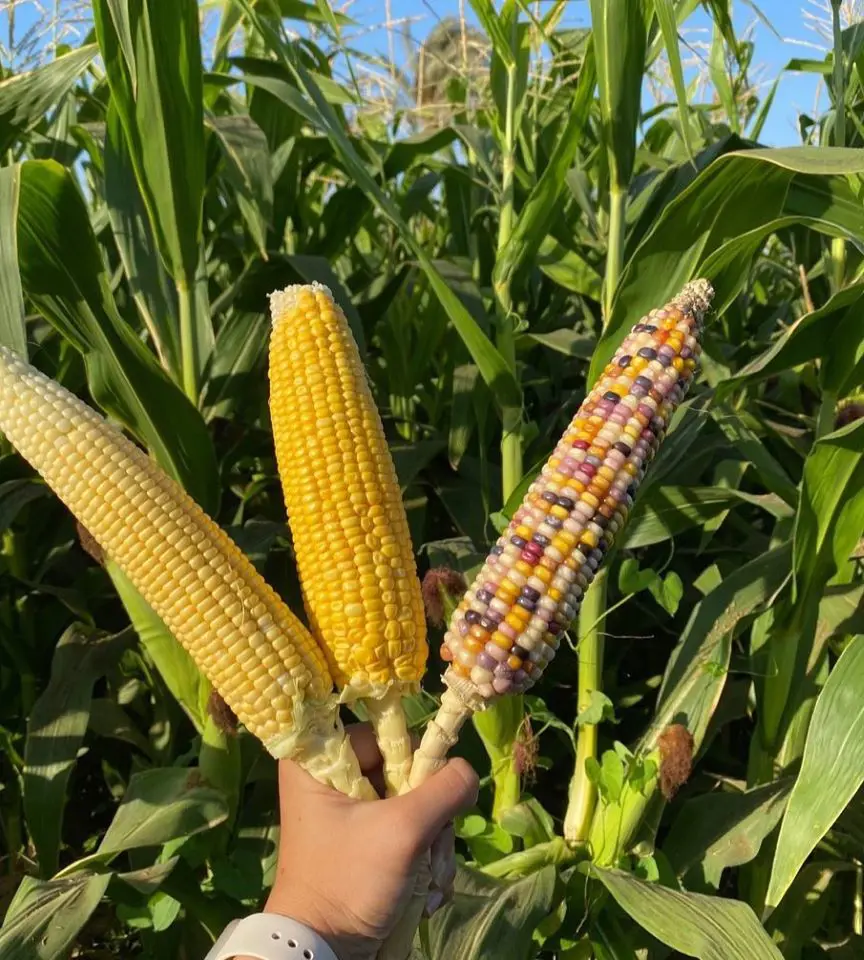
Harvesting your maize plant depends on how you plan to consume it. If you are aiming for fresh eating, it's best to harvest when the kernels are fully formed but still in the milk stage. At this point, the kernels are plump and juicy, releasing a milky substance when punctured.
However, if you are harvesting for drying purposes, wait until the kernels have fully matured on the stalk. This occurs when the husks have turned brown and dry, and the kernels have hardened.
Here's a step-by-step guide on how to harvest corn:
Timing: Corn is generally ready for harvest about 20-25 days after the appearance of silks. Test a few ears by gently peeling back the husk and piercing a kernel with your thumbnail. If the liquid inside is milky, it is ready for harvest.
Preparation: Wear gloves and long sleeves to protect your hands and arms from the sharp edges of the corn leaves. Have a container or basket ready to collect the harvested ears.
Harvesting: Firmly grasp the ear of corn near the base. With a quick, downward motion, twist the ear of corn away from the stalk. This should cleanly separate the ear from the plant. Avoid pulling on the ear, as this can damage the plant. Continue harvesting until you have collected all the ripe ears from the stalks.
Post-Harvest Handling: Immediately after harvesting, place the ears of corn in a shaded or cool area to prevent them from drying out. Corn starts to lose its sweetness and flavor rapidly after harvest, so it's best to consume it as soon as possible. If you are not consuming it right away, store it in the refrigerator to maintain freshness.
Challenges While Growing Corn
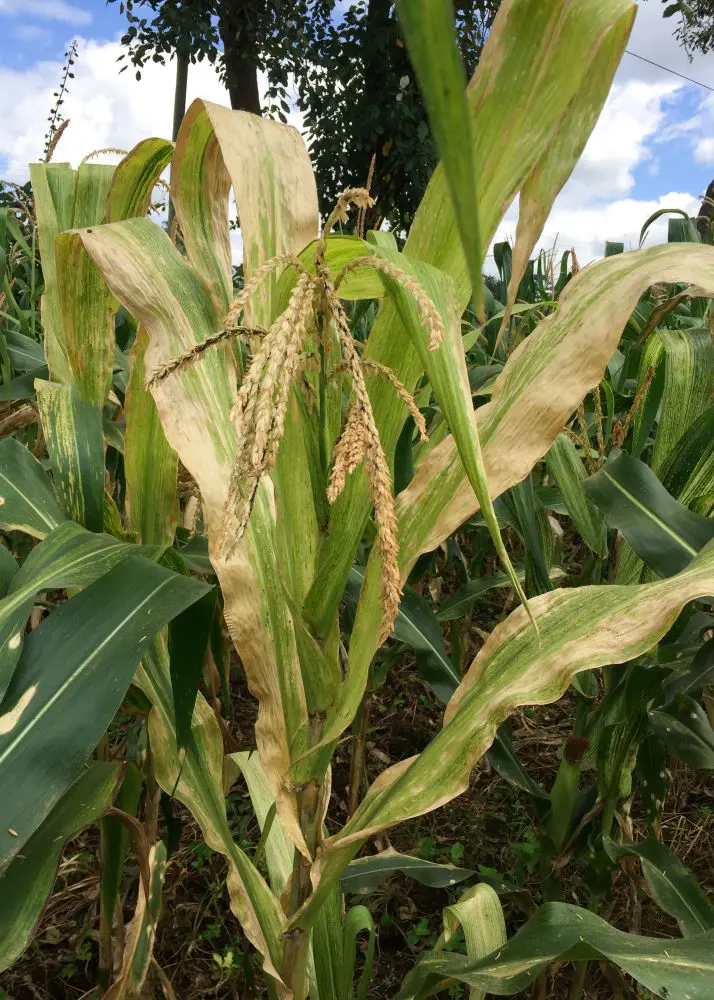
Even though corn plants are resilient crops, they are still susceptible to various issues that can hinder their growth and productivity if not managed timely. These issues include nutrient deficiencies, pest infestations, diseases, environmental stressors such as inadequate watering extreme temperatures, and poor pollination.
Addressing these problems promptly is essential to maintaining their health and vigor throughout their growth cycle.
Yellowing Leaves
Cause: Yellowing leaves can indicate various issues, including nutrient deficiencies (such as nitrogen or iron), overwatering, underwatering, or poor soil drainage. Nitrogen deficiency typically shows up as yellowing starting from the tips of the lower leaves and progressing upwards.
Solution: Firstly, diagnose the specific cause of yellowing by examining the plant's environment and soil. Ensure the plant is receiving appropriate water levels; adjust watering frequency accordingly. If it's a nutrient deficiency, consider using a balanced fertilizer or supplementing the soil with compost matter.
Common Pests
Cause: Common pests such as aphids, corn earworms, and spider mites can damage corn plants by feeding on foliage or kernels, leading to reduced yield and plant vigor.
Solution: Regularly inspect plants for signs of pest infestations. Use insecticidal soap, neem oil, or organic pesticides to control pest populations. Introducing beneficial insects like ladybugs can provide natural pest control. Employing crop rotation practices can also help disrupt pest life cycles.
Diseases
Cause: Fungal diseases like fungal leaf blight or bacterial diseases like bacterial wilt can weaken corn plants, leading to stunted growth, wilting, or even death.
Solution: Practice good sanitation by removing and disposing of infected plant debris. Ensure proper spacing between plants to improve air circulation. Use disease-resistant corn varieties whenever possible. Apply appropriate fungicides or bactericides following label instructions if diseases persist.
Stunted Growth
Cause: Stunted growth can result from various factors such as poor soil quality, inadequate sunlight, overcrowding, or improper planting depth.
Solution: Ensure the plants are planted at the appropriate depth and spaced adequately to prevent overcrowding. Provide sufficient sunlight by selecting a suitable planting location and avoiding shading from nearby structures or plants. Amend the soil with organic matter or compost to improve its quality and fertility.
Nutrient Deficiencies
Cause: Nutrient deficiencies can manifest as yellowing or discolored leaves, affecting plant growth and development.
Solution: Conduct a soil test to determine nutrient levels and deficiencies accurately. Based on the results, apply balanced fertilizers or supplements to correct deficiencies. Additionally, consider incorporating organic matter or compost into the soil to improve overall soil fertility and nutrient availability.
Poor Pollination
Cause: Inadequate pollination can lead to poorly formed ears or incomplete kernel development, ultimately reducing yield.
Solution: Plant corn in blocks rather than single rows to enhance cross-pollination. Introduce pollinator-attracting plants nearby to encourage pollinators to visit. During the pollen-shedding period, gently shake the stalks to facilitate pollination. Avoid planting corn near plants that release pollen at the same time, which can interfere with pollination.
Recent posts
How To Grow
How To Grow
How To Grow Garlic
A bulbous member of the onion family, garlic is prized for both its potent flavor and a variety of therapeutic applications. Due to its relative ease of cultivation, it is a favorite among home gardeners and a pioneer in kitchens worldwide. Garlic ma...
How To Grow
How To Plant and Grow Orchids
Orchids are one of the prettiest and most interesting flowers out there, with over 30,000 types and 200,000 hybrids. They are one of the biggest families of plants and can grow indoors or outdoors. However, growing and taking care of orchids is not e...
How To Grow
How To Plant, Grow And Care Cucumbers
Growing cucumbers is like going on a fun journey where you get to plant and pick your very own crunchy veggies. It's not just about having tasty cucumbers, it's also about the joy of seeing your plants grow. Whether you have a big garden or a small b...
How To Grow
How To Plant, Grow And Care Radishes In Your Garden
Growing radishes in your garden is a fantastic way to enjoy crisp and peppery veggies that you've nurtured from seed to plate. It's a straightforward process that anyone can try, even if you're new to gardening. In the following 12 steps, we'll guide...
How To Grow
How to Plant, Grow And Care For Spinach?
Growing leafy greens in your backyard garden is both healthy and fun. Spinach can be the best leafy green to start with as it is relatively easy to grow from scratch and can be harvested in about a month from planting. It thrives in spring or fall in...
How To Grow
How To Plant, Grow And Care Asparagus In Your Backyard
People love asparagus in spring and summer because it's one of the first veggies to pop up, and the fresh spears taste amazing. Besides being tasty, it's super healthy, loaded with vitamin B, vitamin C, calcium, and iron. Growing asparagus might soun...
